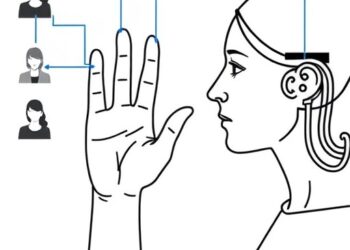In a groundbreaking study poised to reshape our understanding of adolescent health, researchers have uncovered intricate connections between social factors and the multifaceted nature of sleep health among early adolescents. Published in Pediatric Research in late 2025, this comprehensive investigation delves into the social epidemiology of sleep, presenting a nuanced portrait of how environmental, behavioral, and societal influences intertwine to affect sleep quality, duration, continuity, and overall sleep health in this critical developmental period.
Sleep, long recognized as a cornerstone of physical and mental well-being, takes on unique importance during early adolescence—a stage marked by rapid neurodevelopment, identity formation, and increased academic and social pressures. The study, involving a multidisciplinary team of epidemiologists, public health experts, and pediatricians, employs state-of-the-art measurement models to assess sleep health beyond traditional metrics. Multifaceted sleep health indicators include not only total sleep duration but also sleep regularity, satisfaction, latency, and efficiency, thereby providing a holistic view rarely achieved in prior research.
Central to the study’s approach is the concept of social epidemiology, which scrutinizes how social determinants—from socioeconomic status and family dynamics to peer relationships and neighborhood environments—influence health outcomes. By applying this framework to sleep health, the researchers illuminate how disparities in social contexts contribute to varied sleep experiences among adolescents, unpacking the layers of complexity that underlie simple measures such as hours slept.
The research methodology hinges on a combination of objective sleep assessments via wearable actigraphy devices, self-reported sleep diaries, and extensive surveys capturing social factors including household income, parental education, peer connectivity, and perceived neighborhood safety. This triangulation of data sources allowed for a sophisticated analysis linking quantitative sleep parameters to qualitative social variables, revealing patterns that challenge conventional wisdom about adolescent sleep hygiene.
One of the salient findings highlights socioeconomic disparities as a pivotal determinant of multidimensional sleep health. Adolescents from lower-income families exhibited significantly poorer sleep efficiency and greater sleep disturbance, conditions that were further exacerbated by environmental factors such as high noise pollution and overcrowded living situations. These findings resonate with broader public health narratives emphasizing the intersection between poverty and adverse health outcomes but uniquely contextualize these connections within the realm of adolescent sleep.
The study also reveals the profound impact of psychosocial stressors on sleep health dimensions, particularly sleep latency and continuity. Participants reporting high levels of social anxiety or peer victimization demonstrated longer times to fall asleep and more frequent nighttime awakenings, suggesting that the social milieu exerts a powerful influence on sleep architecture. This insight underscores the need for mental health interventions that address social dynamics as part of holistic strategies to improve sleep.
Notably, parental involvement and household routines emerged as protective factors in the multidimensional sleep landscape. Consistent bedtime rituals and engaged parental monitoring correlated strongly with better sleep regularity and subjective sleep satisfaction. These findings inform potential avenues for preventive approaches, wherein enhancing family cohesion and establishing stable schedules might buffer against the deleterious effects of external stressors.
Advanced statistical modeling employed in the study, including latent class analysis and structural equation modeling, enabled the researchers to categorize adolescents into distinct sleep health phenotypes. These phenotypes encapsulate complex combinations of sleep characteristics and associated social profiles, offering a novel classification schema that could guide personalized interventions in clinical and community settings.
The implications of this research extend beyond the academic domain, informing policy discussions around urban planning, education systems, and social welfare programs. For instance, the identification of neighborhood safety as a modifiable social determinant of sleep health invites targeted community investments to create safer, more supportive environments conducive to healthy adolescent development.
Furthermore, the study challenges simplified one-dimensional approaches to sleep research, advocating for multidimensional assessment tools in both clinical practice and population health monitoring. This paradigm shift is particularly timely as digital health technologies continue to evolve, providing unprecedented opportunities for capturing complex sleep data while contextualizing it within the social fabric of young individuals’ lives.
Experts in pediatric sleep medicine have lauded the study as a watershed moment, emphasizing its contribution to disentangling the “sleep-society nexus.” This comprehensive approach holds promise for enhancing early identification of sleep health disparities and tailoring culturally sensitive interventions, thereby advancing equity in adolescent health outcomes.
The authors also emphasize the bidirectional nature of the relationship between social factors and sleep health—a dynamic interplay wherein poor sleep can exacerbate social difficulties, and adverse social conditions disrupt sleep. Understanding this feedback loop is critical for designing multi-tiered intervention strategies that address both social determinants and individual sleep problems concurrently.
Looking ahead, the study calls for longitudinal research to track the trajectories of multidimensional sleep health across adolescence, illuminating how evolving social environments influence sleep patterns over time. Such research could elucidate critical windows for intervention and provide insights into the long-term consequences of early sleep health disparities on mental health, academic achievement, and risk behaviors.
In summary, this pioneering research paints a vividly detailed portrait of how social environments shape the multidimensional construct of sleep health in early adolescence. It challenges researchers, clinicians, and policymakers alike to broaden their conceptual and practical frameworks, recognizing sleep health as a complex, socially embedded phenomenon that warrants comprehensive, multifactorial attention.
As society continues to grapple with rising rates of adolescent mental health challenges, obesity, and academic stress, this study offers a timely reminder that solutions must be multidimensional—addressing not only individual behaviors but the social contexts that frame young lives. Multidimensional sleep health emerges as both a marker and mediator of overall adolescent well-being, underscoring the urgency of incorporating social epidemiological insights into future research, clinical practice, and public health initiatives.
Ultimately, the study by Nagata and colleagues charts a transformative path forward, advocating for an integrated view of adolescent sleep health that embraces complexity and prioritizes equity. It is a compelling call to action for multi-sector collaboration to foster environments that support restorative sleep as a foundation for healthy adolescent development and lifelong well-being.
Subject of Research: Social epidemiology of multidimensional sleep health in early adolescence
Article Title: Social epidemiology of multidimensional sleep health in early adolescence
Article References:
Nagata, J.M., Helmer, C.K., Frimpong, I. et al. Social epidemiology of multidimensional sleep health in early adolescence. Pediatr Res (2025). https://doi.org/10.1038/s41390-025-04616-7
Image Credits: AI Generated
DOI: 28 November 2025











